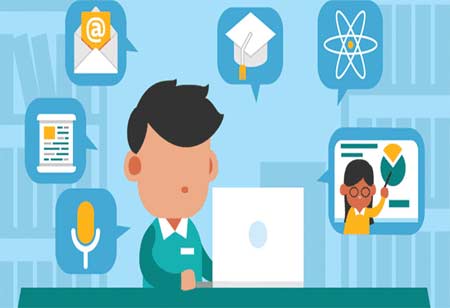THANK YOU FOR SUBSCRIBING
Top Trending Tech Enablers for K-12 Education
Users have probably heard of 'tech enablers,' which are various technological components that help to fuel and improve education

By
Apac CIOOutlook | Monday, August 30, 2021
Stay ahead of the industry with exclusive feature stories on the top companies, expert insights and the latest news delivered straight to your inbox. Subscribe today.
Users have probably heard of 'tech enablers,' which are various technological components that help to fuel and improve education.
Fremont, CA: Users should be aware that technology is increasingly prominent in the classroom and influencing how educators teach and students learn. It is today's society's driving force and will continue to grow and adapt until it becomes the driving force of education.
Users have probably heard of 'tech enablers,' which are various technological components that help to fuel and improve education. Let's see top enablers and their influence in the classroom in this post.
- Digital Collaboration Platforms
As a result of the COVID-19 epidemic, schools worldwide got forced to close to maintain infection rates as low as possible. To continue their education, teachers and students had to move to virtual classrooms, which they did through digital collaboration platforms.
Teachers and students can use these platforms to connect, meet, and debate numerous issues and the year's schoolwork. It combines standard LMS capabilities with social media features like video, live streaming, chat, and more. As a result, it results in a more simplified and effective learning experience.
- Tools for Online Privacy & Safety
Since most learning is now possible online, it is probably more important than ever for instructors and students to preserve their privacy and safety online. But, unfortunately, millions of hackers and cybercriminals are on the loose, and students are among the most susceptible targets.
Ad-blockers, VPNs, and virus protection suites are all necessary for online safety and privacy. Unfortunately, although most kids are far more technologically adept than their professors and are familiar with the internet and social media, this does not make them immune to cybercrime.
- Analytics and Adaptive Technologies
In education, analytics technologies are becoming increasingly prevalent. For example, teachers may gain insight into the nature of their students' unique difficulties using tools like Google Forms, which allows them to develop and distribute their exams, questionnaires, and evaluations. Thus, it allows for more tailored learning.
Education becomes a process of recognizing and working through difficulties when utilized with adaptive technology, which advises the best course of action for working through whatever problems a student could have. In addition, it increases student motivation and engagement.
- Cloud Infrastructure
The name comes from the fact that cloud infrastructure allows data gets stored in 'the cloud.' Students can upload work to the cloud storage for their class or school, where it will be downloaded and graded by their professors.
Because there are no actual papers to grade in remote learning, this is critical. Teachers may also submit materials and other information to the cloud, which students can subsequently download and watch.
- Mobile Devices
Mobile learning is becoming increasingly popular, and there are a plethora of apps available to support it. Students carry about a vast store of knowledge in their pockets that they may access at any moment by pressing a few buttons. In addition, learners may access their schoolwork from anywhere globally using cloud technology, as long as they have a steady internet connection.
See Also:Top Compliance technology Consulting/Services Companies in APAC





